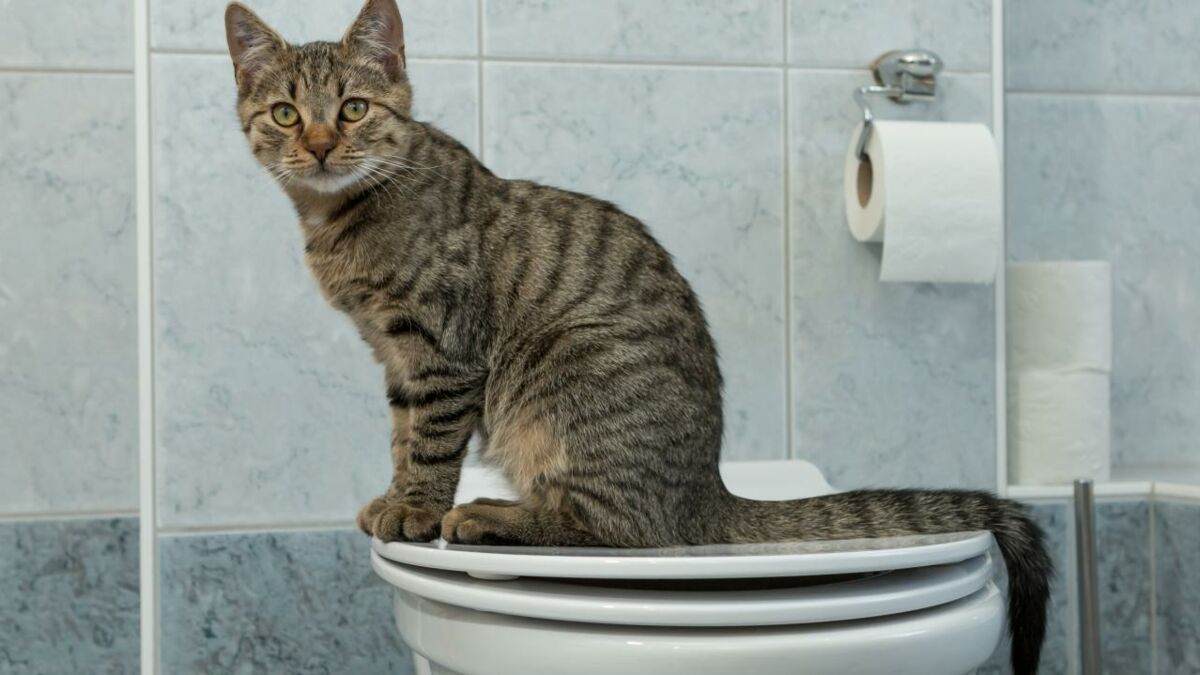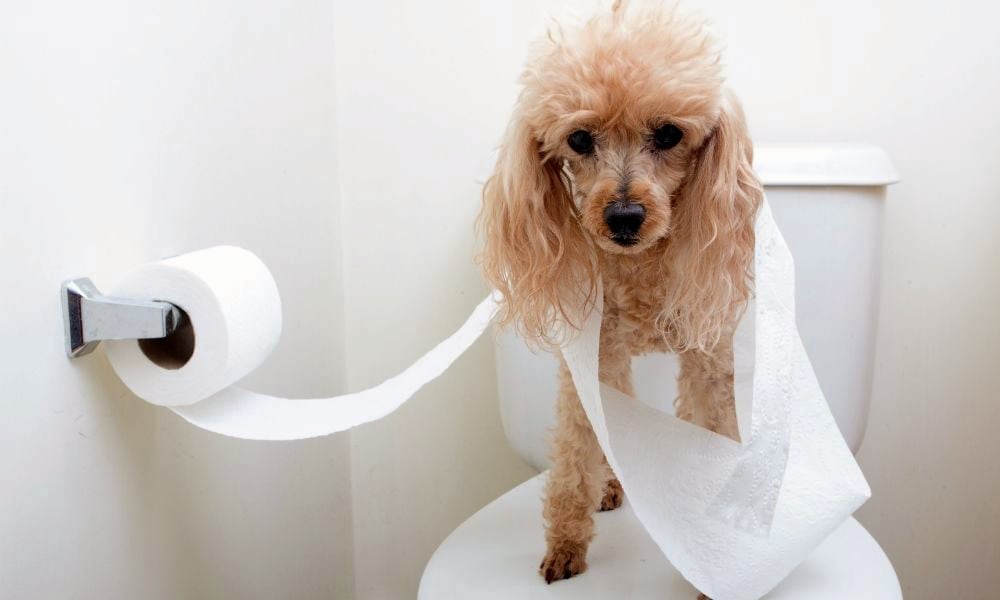Understanding Why Animal Waste Must Not Be Flushed Down the Toilet
Understanding Why Animal Waste Must Not Be Flushed Down the Toilet
Blog Article
How do you actually feel in relation to 4 Reasons Why Dog Poop Cleanup is Important?

When it comes to dealing with waste, specifically animal waste, many individuals commonly consider the convenient alternative of flushing it down the commode. However, this relatively easy remedy can have significant consequences for the environment and public health. In this post, we'll discover why flushing animal waste down the bathroom is a poor idea and give alternative methods for appropriate disposal.
Introduction
Proper waste disposal is important for keeping ecological sustainability and public health. While it may seem safe to purge animal waste down the bathroom, it can cause numerous issues, both for the environment and human health.
Threats of flushing animal waste
Environmental effect
Purging animal waste presents harmful bacteria and pathogens into waterways, which can adversely influence water ecosystems. These pathogens can infect water resources and harm marine life, interrupting delicate ecological communities.
Public health concerns
Pet waste has harmful bacteria such as E. coli and Salmonella, which can pose serious health and wellness risks to people. Purging pet waste down the commode can pollute water supplies, resulting in the spread of conditions and infections.
Alternatives to flushing
Instead of flushing animal waste down the commode, there are several different disposal approaches that are much more environmentally friendly and hygienic.
Composting
Composting pet waste is an environment-friendly way to throw away it. By composting, organic matter is broken down into nutrient-rich dirt, which can be made use of to feed yards and plants.
Land fill disposal
Dealing with animal waste in a garbage dump is one more alternative. While not as eco-friendly as composting, it is a safer alternative to flushing, as it protects against the contamination of water sources.
Pet garbage disposal systems
There are specific family pet garbage disposal systems available that safely and hygienically deal with pet waste. These systems frequently use enzymes to break down waste and remove smells.
Steps to proper animal waste disposal
To ensure correct disposal of pet waste, adhere to these actions:
Scooping and bagging waste
Routinely scoop and bag animal waste using biodegradable bags. This avoids waste from contaminating the atmosphere.
Utilizing assigned waste containers
Dispose of bagged animal waste in designated check here waste containers, such as compost bins or landfill containers. Stay clear of flushing it down the bathroom whatsoever expenses.
Cleaning can and pet dog locations routinely
Frequently tidy can and pet locations to avoid the buildup of waste and microorganisms. Usage pet-safe cleaning products to preserve health.
Benefits of appropriate disposal techniques
Taking on proper disposal approaches for animal waste uses a number of benefits:
Lowered environmental pollution
Appropriate disposal techniques minimize the danger of environmental pollution, shielding rivers and ecosystems from contamination
Lessened danger of water contamination.
By preventing flushing animal waste down the bathroom, the threat of water contamination is dramatically decreased, protecting public health.
Enhanced sanitation and health
Proper disposal methods promote much better cleanliness and health, creating a much safer atmosphere for both humans and animals.
Verdict
In conclusion, flushing animal waste down the bathroom is hazardous to the setting and public health. By embracing different disposal techniques and adhering to appropriate waste management practices, we can decrease the unfavorable influence of animal waste and contribute to a cleaner, much healthier earth.
Why You Should Never Flush Cat Poop Down the Toilet
A rose by any other name might smell as sweet, but not all poop is created equal. Toilets, and our sewage systems, are designed for human excrement, not animal waste. It might seem like it couldn’t hurt to toss cat feces into the loo, but it’s not a good idea to flush cat poop in the toilet.
First and foremost, assuming your cat uses a litter box, any waste is going to have litter on it. And even the smallest amount of litter can wreak havoc on plumbing.
Over time, small amounts build up, filling up your septic system. Most litter sold today is clumping; it is made from a type of clay that hardens when it gets wet. Ever tried to scrape old clumps from the bottom of a litter box? You know just how cement-hard it can get!
Now imagine just a small clump of that stuck in your pipes. A simple de-clogger like Drano isn’t going to cut it. And that means it’s going to cost you big time to fix it.
For an amusing, graphic tale of what happens when you flush too much litter down the toilet all at once, take a few minutes to read Gene Weingarten’s 2017 Washington Post column “So that’s what happens when you flush cat litter down the toilet.”
Parasitic Contamination
Believe it or not, your healthy kitty may be harboring a nasty parasite. Only cats excrete Toxoplasma in their feces. Yet it rarely causes serious health issues in the cats that are infected. Most people will be fine too if infected. Only pregnant women and people with compromised immune systems are at risk. (If you’ve ever heard how women who are expecting are excused from litter cleaning duty, Toxoplasma is why.)
But other animals may have a problem if infected with the parasite. And human water treatment systems aren’t designed to handle it. As a result, the systems don’t remove the parasite before discharging wastewater into local waterways. Fish, shellfish, and other marine life — otters in particular — are susceptible to toxoplasma. If exposed, most will end up with brain damage and many will die.
Depending on the species of fish, they may end up on someone’s fish hook and, ultimately on someone’s dinner plate. If that someone has a chronic illness, they’re at risk.
Skip the Toilet Training
We know there are folks out there who like to toilet train their cats. And we give them props, it takes a lot of work. But thanks to the toxoplasma, it’s not a good idea.
Leave the toilet to the humans, and accept your future litter cleaning duty.

Frequently tidy can and pet locations to avoid the buildup of waste and microorganisms. Usage pet-safe cleaning products to preserve health.
Benefits of appropriate disposal techniques
Taking on proper disposal approaches for animal waste uses a number of benefits:
Lowered environmental pollution
Appropriate disposal techniques minimize the danger of environmental pollution, shielding rivers and ecosystems from contamination
Lessened danger of water contamination.
By preventing flushing animal waste down the bathroom, the threat of water contamination is dramatically decreased, protecting public health.
Enhanced sanitation and health
Proper disposal methods promote much better cleanliness and health, creating a much safer atmosphere for both humans and animals.
Verdict
In conclusion, flushing animal waste down the bathroom is hazardous to the setting and public health. By embracing different disposal techniques and adhering to appropriate waste management practices, we can decrease the unfavorable influence of animal waste and contribute to a cleaner, much healthier earth.
Why You Should Never Flush Cat Poop Down the Toilet
A rose by any other name might smell as sweet, but not all poop is created equal. Toilets, and our sewage systems, are designed for human excrement, not animal waste. It might seem like it couldn’t hurt to toss cat feces into the loo, but it’s not a good idea to flush cat poop in the toilet.
First and foremost, assuming your cat uses a litter box, any waste is going to have litter on it. And even the smallest amount of litter can wreak havoc on plumbing.
Over time, small amounts build up, filling up your septic system. Most litter sold today is clumping; it is made from a type of clay that hardens when it gets wet. Ever tried to scrape old clumps from the bottom of a litter box? You know just how cement-hard it can get!
Now imagine just a small clump of that stuck in your pipes. A simple de-clogger like Drano isn’t going to cut it. And that means it’s going to cost you big time to fix it.
For an amusing, graphic tale of what happens when you flush too much litter down the toilet all at once, take a few minutes to read Gene Weingarten’s 2017 Washington Post column “So that’s what happens when you flush cat litter down the toilet.”
Parasitic Contamination
Believe it or not, your healthy kitty may be harboring a nasty parasite. Only cats excrete Toxoplasma in their feces. Yet it rarely causes serious health issues in the cats that are infected. Most people will be fine too if infected. Only pregnant women and people with compromised immune systems are at risk. (If you’ve ever heard how women who are expecting are excused from litter cleaning duty, Toxoplasma is why.)
But other animals may have a problem if infected with the parasite. And human water treatment systems aren’t designed to handle it. As a result, the systems don’t remove the parasite before discharging wastewater into local waterways. Fish, shellfish, and other marine life — otters in particular — are susceptible to toxoplasma. If exposed, most will end up with brain damage and many will die.
Depending on the species of fish, they may end up on someone’s fish hook and, ultimately on someone’s dinner plate. If that someone has a chronic illness, they’re at risk.
Skip the Toilet Training
We know there are folks out there who like to toilet train their cats. And we give them props, it takes a lot of work. But thanks to the toxoplasma, it’s not a good idea.
Leave the toilet to the humans, and accept your future litter cleaning duty.

We are very drawn to and I am praying you appreciated the new entry. Loved our blog posting? Please quickly share it. Let others locate it. We treasure reading our article about Why you should never flush dog poop down the toilet.
Information Here Report this page